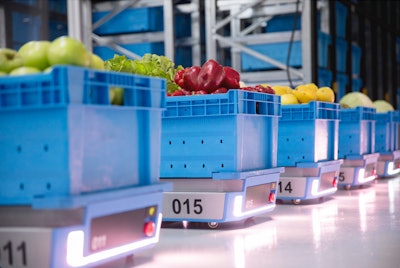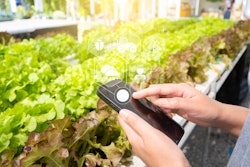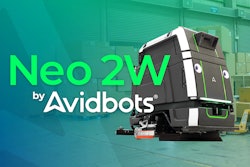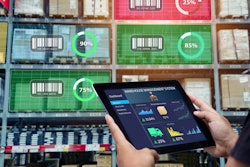
The early days of grocery shopping consisted of handing a list to a clerk, who assembled your order for you. When Piggly Wiggly opened in 1916, clerks stocked the shelves, but they “politely refused to select merchandise for visitors.” This new self-serve model saved shoppers money and made financial sense for the store.
More than a century later, shoppers still find themselves with the time-consuming chore of walking grocery aisles and adding items to their carts. Even the more modern version of placing an order online and having someone else assemble and prepare it for delivery or pickup still leaves room for errors and inefficiencies.
With online grocery demand rising, how can today’s grocery stores keep up and continue to provide a quality experience for both their online and in-store customers? By embracing the new 21st-century clerk — robotics. Automated systems that handle everything from inventory management to price checking to picking and packing items are boosting efficiency and lowering costs in an industry that operates on razor-thin margins. A digital clerk, one who isn’t susceptible to inevitable human error and who always knows what’s in stock, could provide an added boost to grocers.
Better unit economics
According to the Food Marketing Institute, net profit margins after taxes across the grocery industry in 2021 was 2.9%, which is slim, but it’s also the second-highest number in nearly 40 years. Additionally, a 2019 report from Jefferies P&L estimated that for every delivery order fulfilled via manual, in-store picking, grocers lose an average of $10.50. The numbers were much better for curbside service, where grocers lose $3 per manually fulfilled order.
After turning to automated picking systems, that equation changes significantly in favor of the stores. The Jefferies P&L report found that using a centralized, automated picking solution from a warehouse turns margins from negative to positive, with retailers netting an average of $7.50 per order. The returns are even better with automated picking in a micro-fulfillment center, where instead of using in-store or back-of-store space, grocers use a warehouse for automated orders. That method nets $18 per delivery order and a whopping $24 per curbside pickup order.
Improved accuracy
Robotics also can improve order accuracy and overall quality. Rather than packing orders based on what’s on the shelves, an automated system packs from a dedicated online inventory which includes loose, fresh and weighted goods. This approach results in near-total alignment between what the shopper sees as in stock on the website or app and what’s actually available, greatly reducing substitutions or errors.
That type of seamless shopping experience has a direct link to customer satisfaction and loyalty. A survey of more than 2,000 U.S. consumers found that just over half said product availability played a key role in securing their loyalty to a certain store. A smaller percentage (6%) said knowing what items were in stock and available for purchase was the single most important factor in choosing a grocer.
Superior labor efficiency and productivity
Automated fulfillment spaces take advantage of robots’ ability to better navigate tight spaces and reach greater heights than in-person pickers, allowing grocers to greatly streamline their operations. A cube-based storage system enables both high density and high throughput, allowing a space the size of a traditional back-of-store to house a much larger amount of inventory. Robotics can typically triple the amount of throughput compared to manual fulfillment and unlock a 70% improvement in storage density.
The final result is still a collaboration between people and machines. A small handful of employees operate workstations where they quickly assemble incoming orders from the automated pickers and then scan and pack the items.
By taking advantage of robotics as the new digital clerk, grocery brands can solve the most pressing issues they face today: tight margins, labor shortages and shifting customer expectations. Rethinking the fulfillment model will help stores process orders faster and more accurately, leading to more satisfied customers.


















